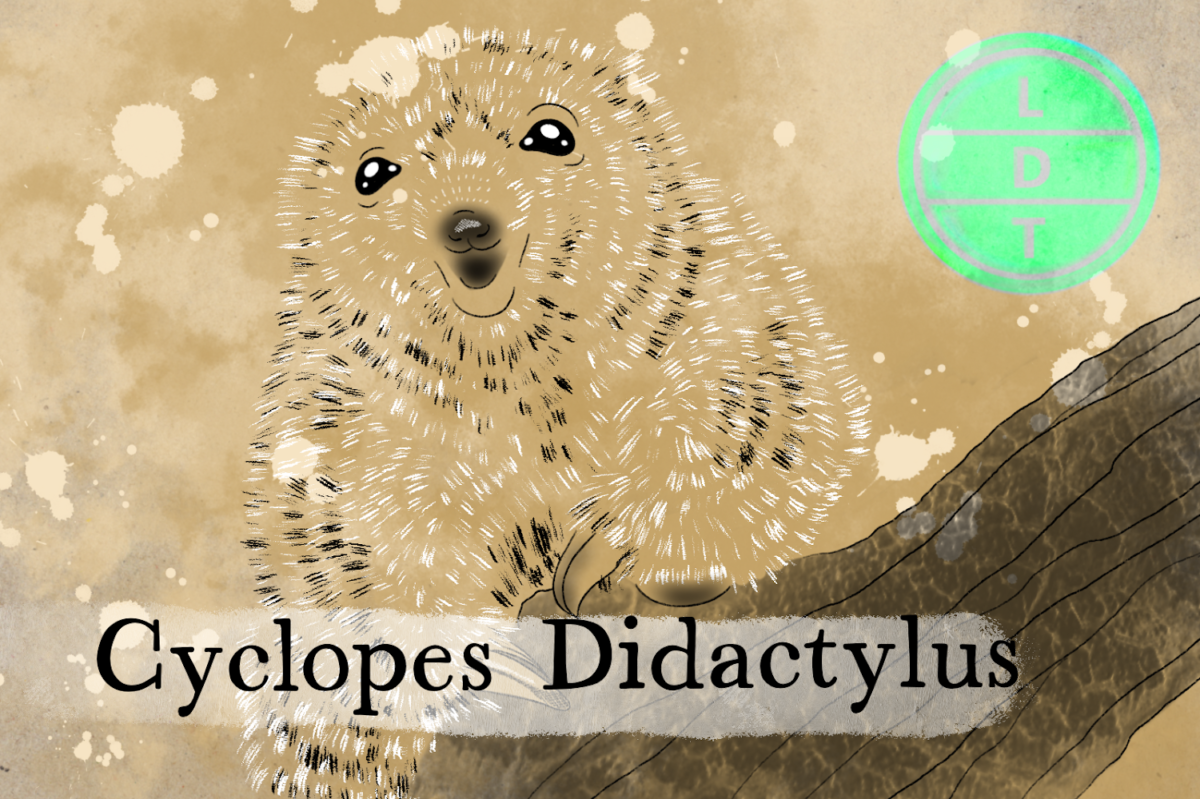“…and today we’re talking about the smooth jazz of tree critters. But more on that later.”
Deep in the jungles of the Amazon, an adorable ball of fluff clings to a tree branch, lapping up delicious ants. The pygmy silky anteater clearly has sloths as a role model, and it shows in their… laid back nature. But moving slowly and eating sparingly take a toll, and this carefree lifestyle comes at a cost, particularly for an anteater. But keeping a cool head when the heat turns up is the way to sway here in Life, Death, and Taxonomy.
Description of the Silky Anteater
- Silky anteaters are the tiniest of anteaters with short faces and large heads.
- Their fur is dense, soft, and varies from gray to yellow with a silvery gloss, sometimes featuring darker streaks and lighter underparts.
- They have black eyes, red foot soles, and two claws on their forefeet, which they use to grip branches tightly.
- Their hind feet have four equal-length toes with long claws.
Measure Up
Welcome to the beloved Measure Up segment. The official listener’s favorite part of the show! The part of the show when we present the animal’s size and dimension in relatable terms through a quiz that’s fun for the whole family. It’s also the part of the show that’s introduced by you when you send in audio of yourself saying, singing, or chittering the words Measure Up into ldtaxonomy at gmail dot com. We do have a new Measure Up intro!
Ant and The Aardvark 1:09
Length
- 36 to 45 cm (14 to 18 in)
- How many silky anteaters go into the largest spider web ever?
- Hint: The largest spider web ever found was created by the Darwin’s bark spider, which is known for producing orb webs. The Darwin’s bark spider’s silk is also the toughest biological material ever studied, adding to the impressive nature of their web-building capabilities.
- 54.67 ants. The largest web measured over 82 feet wide.
Weight
- 175 to 400 g (6.2 to 14.1 oz)
- How many African driver ant queens would a silky anteater have to eat to eat its weight in African driver ant queens?
- Hint: The African driver ant queen is the largest ant in the world.
- 198.445 ants. These ants are 2 grams.
Fast Facts about the Silky Anteater
Silky anteaters, also known as pygmy anteaters, are native to southern Mexico, Central America (excluding El Salvador), and parts of South America, such as Ecuador, northern Peru, Bolivia, and Brazil.
They are also found in the northern Atlantic Forest of Eastern Brazil and on the island of Trinidad. They prefer semi-deciduous, tropical evergreen, and mangrove forests. (Those are also my favorite smoothie flavors.)
Silky anteaters live an arboreal lifestyle in their dense rainforest homes. They’re solitary, and males have larger territories than females. Their diet mainly consists of ants but can also include wasps, termites, and occasionally fruit.
They lack certain digestive enzymes necessary to digest chiton, as evident from the corn kernel-like exoskeletons in their feces. They reproduce up to twice a year, with offspring resembling adults in fur and color.
They often hide in silk cotton trees for camouflage and sleep curled up during the day. When threatened, they adopt a defensive posture.
Major Fact: Asleep to the Heat
Silky anteaters are basically sloth moles made out of fluffy cotton, so they actually share some things in common with your typical sloth
For one, they hang upside down, they move very slowly, and only expend extra energy when absolutely necessary
Larger anteaters are able to mosey around and hunt for ants and termites in their mounds, giving them access to millions of ants at a time.
But since our little snuggle spike hardly ever comes down from the trees, it’s limited to the ants, bugs, and fruits it can find among the branches.
So rather than adapt to eat other kinds of food (its jaw is basically welded shut and it doesn’t have any teeth) it’s adapted to need a lot less food than it otherwise would. This means a much lower metabolism and body temperature. It will also regularly go into a state of torpor, like mini hibernations, to conserve energy.
Because it doesn’t get a lot of food, doesn’t process food quickly, runs colder than most mammals, and hibernates a lot, it actually has a hard time regulating its body temperature. Yes, this is a mammal that relies heavily on the environment to regulate temperature, like a decidedly less-cuddly reptile.
This is why you’ll only find silky anteaters at lower elevations, since over 1500 m above sea level, it’s extremely difficult for them to stay warm. But they can also overheat at lower elevations, so it’s all about finding the sweet spot for this cotton candy monster.
Ending: So find a comfy tree, take lots of naps, and practice your thermoregulation like the silky anteater here in LDT

